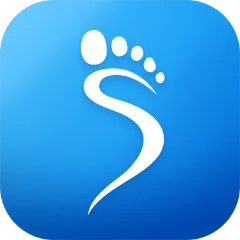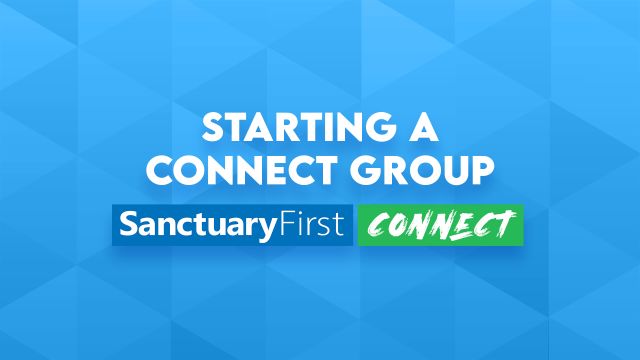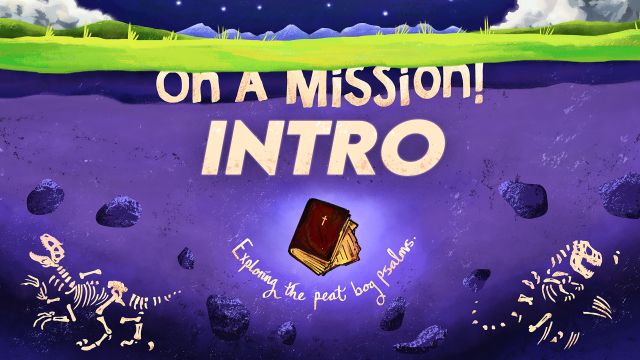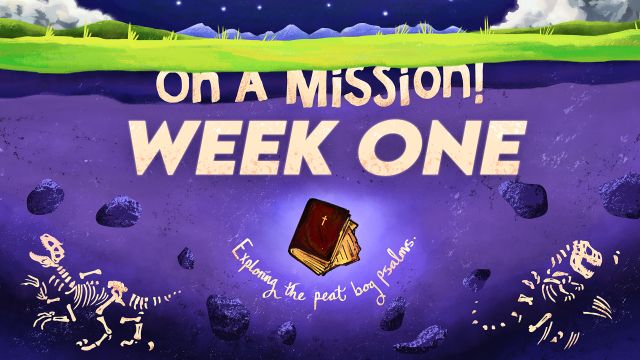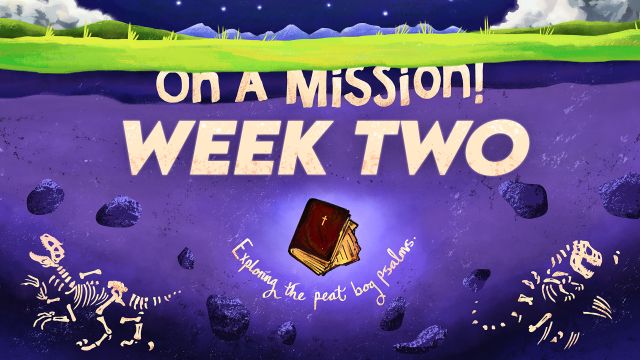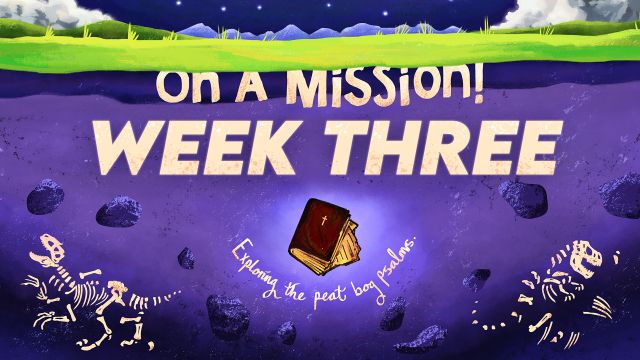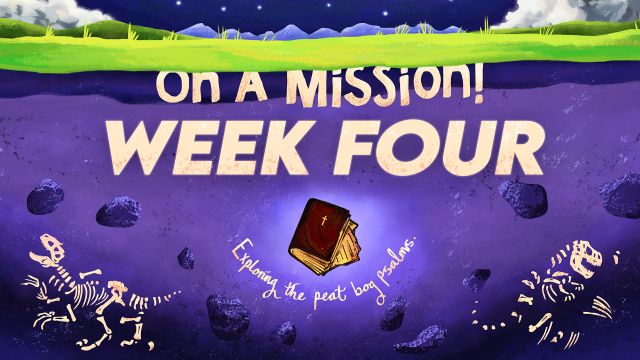On A Mission - Connect Groups
Introduction

Introduction
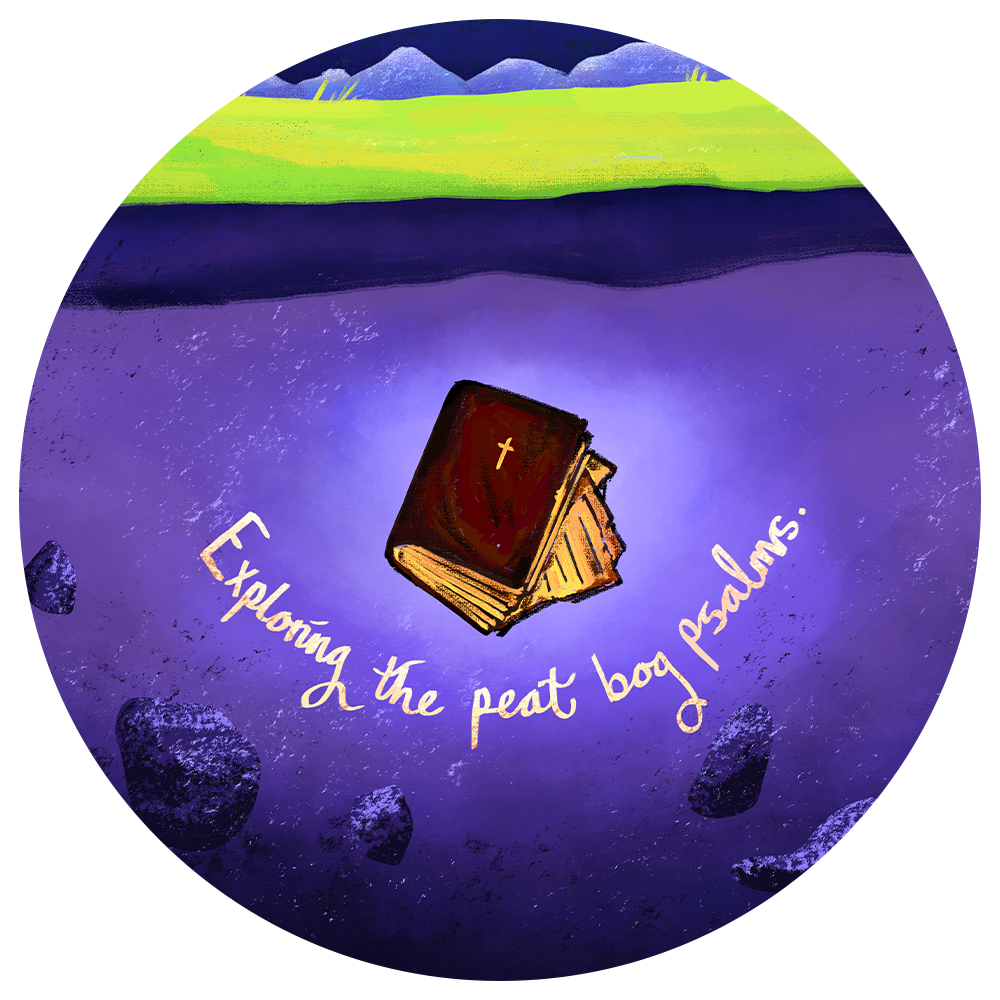 We are a people on a mission. A mission from God. Join us this month as we reflect on this mission and peat bogs… Peat bogs? Really? Read on to find out why!
We are a people on a mission. A mission from God. Join us this month as we reflect on this mission and peat bogs… Peat bogs? Really? Read on to find out why!
In the New Testament Jesus and the Holy Spirit urged the apostles to go out and share the Gospel, the life transforming message of hope — God’s Kingdom — where everyone can belong and be treated with dignity and respect as beloved children of God. To the ends of the earth!
For two thousand years faithful followers of Christ have carried their witness around the world pointing people to God’s grace through openhearted hospitality, tenderness, and acts of compassion. They have expressed this mission through music, story, artistry, and poetry and innovated in a multimedia explosion of creativity! In fact a lot of the technology we use across our lives today were developed and pioneered by Christians looking for new ways of sharing the Gospel.
But those early innovators weren’t starting from nothing. Before those first Christian missionaries set out, God was already at work in the world guiding and inspiring humanity. One way God did this was through the Psalms — the stunning collection of songs and poem in the middle of the Old Testament — a tremendous soul-rich resource that has given solace, vision and motive force to humans for thousands of years!
The musicality and rhythm of the Psalms, both in the original Hebrew and in translation, have made them incredibly memorable and ‘portable’ as we as God’s people have carried them with us. For most of human history most people have been unable to read and write but for all of human history people have been able to sing and recite things word perfect from memory.
So what about those peat bogs? Where do they come into this?
Well bogs — those mossy wetlands — are brilliant for ecology, archaeology and theology! Firstly, they are a carbon sink which means they helpfully store greenhouse gasses keeping them out of the atmosphere. As we think about our mission, sharing the Gospel today, how we care for the planet has to be a core part of caring for one another. Preserving peat bogs are a brilliant natural example of how we can care for the earth. Secondly, they provide a unique chemical environment that can preserve ancient artefacts remarkably well giving us fascinating insights into the past and into our faith.
The ‘Peat Bog Psalter’, a book of Psalms, was uncovered in Ireland just 18 years ago after spending over ONE THOUSAND years in a bog! The absence of oxygen and the presence of certain acids do a great job of preserving organic matter. The manuscript was preserved by sphagnum moss as it sat upright in under the ground for all that time. In fact, if the farmers who accidentally found it while cutting the turf hadn’t wisely covered it back up in moss immediately the exposure to the air and sunlight would have quickly destroyed it. As it is, it’s an invaluable find for archaeology and it is so well conserved that parts of it are even visible to view and read (in Latin!) online. The Peat Bog Psalter has made it from parchment to the touchscreen!
And so what does this Peat Bog Psalter have to do with our mission as God’s people today? Well this one object tells a fascinating story. Archaeologists were surprised to discover fragments of papyrus in the binding of the book suggesting a direct link to the Coptic church in Egypt and the eastern Mediterranean! In the late eighth century missionaries perched in the boggy North Atlantic carried with them not only the psalms but a direct material link to the origins of their faith and vibrant communities of faith hundreds and hundreds of miles away!
How does papyrus make its way to a boggy field in Ireland in the middle of the Middle Ages? The same way that Hebrew words become Greek and Latin and Gaelic and English. The same way that words spoken in Aramaic centuries before become beautiful images painted on parchment. Through missionaries — through us.
For we are a people on a mission. A mission from God. Christ has already won, having defeated darkness and death for all time, but our mission to share the gospel is still ongoing, still unfolding as we reach out to point more people to God’s eternal love. More people need to hear about the Kingdom. More people need to hear the universal wisdom and beauty of the Psalms to discover the solace, inspiration and motivation they offer.
The Peat Bog Psalter tells a story that binds together papyrus and parchment and touchscreens and ploughs. An ongoing multi-lingual, multi-media, multi-cultural, harvest where unexpected discoveries show us the unexpected links that bind God’s people together through time and space! Constantly innovating and experimenting. This is our mission! We are called to join in this harvest, setting out with our ploughs, ready to uncover treasure, through testimony, ministry and song — in our lives and in our worship. We are on a mission!
Weekly overview
- Papyrus — Moving out, a Gospel always on the move…
-
Parchment — Moving out, a Gospel we continually illustrate…
-
Touchscreen — Moving out, a Gospel moving from page to screen…
-
Harvest — Moving out, a Gospel of scattering wide and gathering close…
SEEDS TO SOW: We have a 'Seeds to Sow' phrase at the beginning of each section. These are open-ended and optional and are designed for people wanting to develop their own ideas/resources in response to the material. Perhaps if using this material as a group you could use these prompts to inspire a time of prayer, or drawing, or creative writing? They are intended to be short and sweet, simply a starting off place for you and your imagination, be encouraged to tailor/develop as suits your group.
Download the Discussion Questions as a PDF
These discussion questions adapt our monthly theme for small Connect Groups or personal Bible study. The questions are divided into 4 parts to correspond with the 4 weeks of the Daily Worship theme. They are offered as a guideline and there is no need to go through all the given questions in a single session, or in the following sequence. Feel free to pick and choose, or adapt to what interests you or your group.
